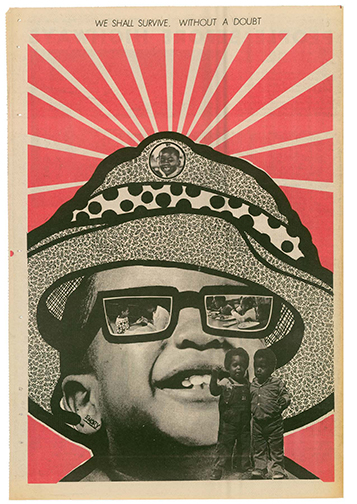
The graphic design program in the Department of Art and Art History is hosting a symposium titled “Design + Social Justice” on Sept. 15-16. All events are free and open to the public.
The events and exhibitions of the symposium will highlight the visual communications, stories and portraits of revolutionary social movements and will examine how graphic design is a tool for organizing and inspiring people to act.
Graphic design artifacts, which include buttons, brochures, flyers, street signs, posters and underground newspapers, have been created throughout history to communicate about social causes.
“These graphically designed objects were tools of visual communications and were essential to the organization of social movements,” said Assistant Professor of Art Stacy Asher.
The graphic artifacts that will be exhibited during the symposium represent the role of art as a revolutionary force and how art and design can communicate about a need for social change. The symposium will examine the role of graphic design in creating messages that promote civil and human rights, preservation of the environment and advocacy of equal opportunity.
The featured guest speaker and visiting artist will be Emory Douglas, a former Minister of Culture and artist of the Black Panther Party. In May, Douglas received The Medal of the American Institute of Graphic Arts (AIGA), the most distinguished award in the field of graphic design. His work will be exhibited at Sheldon Museum of Art through Jan. 3, 2016, and he will be in residence in the Department of Art and Art History from Sept. 14-16.
Douglas will present a free public lecture on Tuesday, Sept. 15 at 5:30 p.m. in Sheldon’s auditorium.
Also attending will be photographer Suzun Lucia Lamaina, a former colleague and student of Farm Security Administration photographer John Collier. Lamaina will be presenting an exhibition of current portraits of former members of the Black Panther Party at Love Library through Oct. 30. Assistant Professors of Art Aaron Sutherlen and Asher are designing a book of these portraits and the members’ stories titled “Revolutionary Grain: Celebrating the Spirit of the Black Panther Party in Portraits and Stories,” which will be published in conjunction with the 50th Anniversary of the Black Panther Party in October 2016.
An exhibition of underground newspapers from the 1960s and 1970s from the collection of Black Panther Party Historian Billy X Jennings will be on display at Love Library through Oct. 30.
Additionally, a collection of graphic design activism for a variety of exhibitions, organizations and causes by Justin Kemerling, an independent designer, activist and collaborator in Omaha, will be on display at Love Library through Oct. 30. Kemerling works with community organizations, political campaigns and change-making startups. His self-initiated projects explore ways to move forward important causes and ideas with design, art and other forms of creative expression.
Douglas, Lamaina, Jennings and Kemerling will participate in a panel discussion moderated by UNL Associate Professor of History and Ethnic Studies Patrick Jones on Wednesday, Sept. 16 at 5:30 p.m. in Love Library’s auditorium. The panel discussion will follow a reception from 4-5:30 p.m. on the second floor of Love Library for the exhibitions on display.
Sutherlen and Asher traveled to San Francisco this spring, where they met with Jennings and saw his archive of underground newspapers.
“To hold these newspapers in your hands from the 1960s and see the stories, was incredible. The newspapers have typography that has been beautifully set with low-tech methods. There was this sense of urgency to get the word out, and the papers were well designed without fussing about the rules of professional page layout,” Asher said. “The newspapers also represent a voice not in the mainstream media. Many of them incorporated a language that was accessible, provocative and powerful.”
Added Sutherlen, “We all think these movements are on social media now, but back then, this was how they got their messages out to the public. What is so interesting was the people promoting civil and human rights, the environment and the advocacy of equal opportunity were all supporting each other. They created this ethos around the struggle for equality and justice.”
The Symposium is sponsored by the Hixson-Lied College of Fine and Performing Arts Visiting Artist Program, Institute for Ethnic Studies, Love Library and the Faculty Senate Convocations Committee. The Sheldon Museum of Art, Humanities Nebraska and the Nebraska Cultural Endowment have also provided generous support.
For a full listing of Design + Social Justice Symposium events, visit http://go.unl.edu/yk4g.